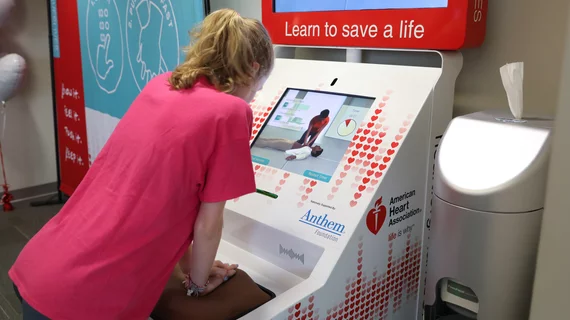High school CPR training boosts cardiac arrest survival
Mandatory CPR training in high school may contribute to higher rates of bystander intervention and improved survival following out-of-hospital cardiac arrest (OHCA), according to a registry study slated to be presented Nov. 11 at the American Heart Association’s Resuscitation Science Symposium in Chicago.
Researchers looked at data from nearly 110,000 OHCA patients, 59 percent of whom suffered their events in states with laws requiring CPR education in schools. Compared to OHCA patients in states without those laws, those individuals experienced:
- A greater likelihood of bystander CPR before emergency medical services arrived (41.3 percent versus 36.1 percent).
- Higher odds of survival to hospital discharge (11.3 percent versus 8.9 percent).
- Higher odds of survival with a favorable neurological outcome, defined as mild to moderate cerebral incapacity (9.5 percent versus 7.6 percent).
The analysis included OHCAs from 14 states and Washington, D.C., that occurred from 2013 to 2017. According to a press release from the American Heart Association, data on specific states will remain confidential.

